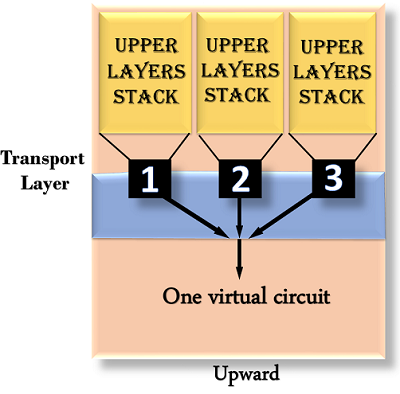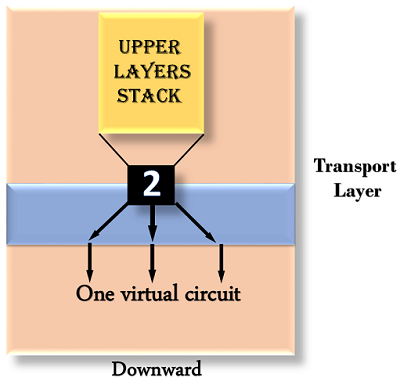Elements of Transport protocol
Transport protocol:
- The transport layer is a 4th layer from the top.
- The main role of the transport layer is to provide the communication services directly to the application processes running on different hosts.
- The transport layer provides a logical communication between application processes running on different hosts. Although the application processes on different hosts are not physically connected, application processes use the logical communication provided by the transport layer to send the messages to each other.
- The transport layer protocols are implemented in the end systems but not in the network routers.
- All transport layer protocols provide multiplexing/demultiplexing service. It also provides other services such as reliable data transfer, bandwidth guarantees, and delay guarantees
Elements of transport protocol:
- Addressing
- Connection establishment
- Connection release
- Multiplexing
ADDRESSING:
- According to the layered model, the transport layer interacts with the functions of the session layer. Many protocols combine session, presentation, and application layer protocols into a single layer known as the application layer. In these cases, delivery to the session layer means the delivery to the application layer. Data generated by an application on one machine must be transmitted to the correct application on another machine. In this case, addressing is provided by the transport layer.
- The transport layer provides the user address which is specified as a station or port. The port variable represents a particular TS user of a specified station known as a Transport Service access point (TSAP). Each station has only one transport entity.
CONNECTION ESTABLISHMENT:
- with packets lifetimes bounded it is possible to device a fool proof was establish connection safely.
- Packets lifetimes can be bounded to known maximum using one of the following techniques:
- Restricted subnet design
- Putting a hop counter in each packet
- Time stamping in each packet.
-> This establishment protocols doesn't require both sides to begin sending will same sequence number.
CONNECTION RELEASE:
A connection is released using either asymmetric or symetric variant out the improved protocol for releasing a connection is a three handshake protocol.
- Asymmetric release
- symmetric release
It is the way the telephone system works when one party hangup ,the connection is broken.
Symmetric release:
Treats the connection as two separate unidirectional connection are requiring each one is release separately.

 |






Comments
Post a Comment